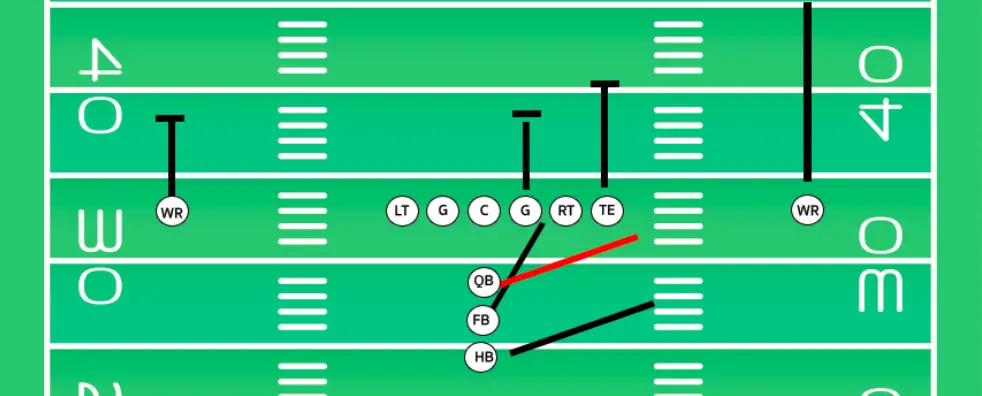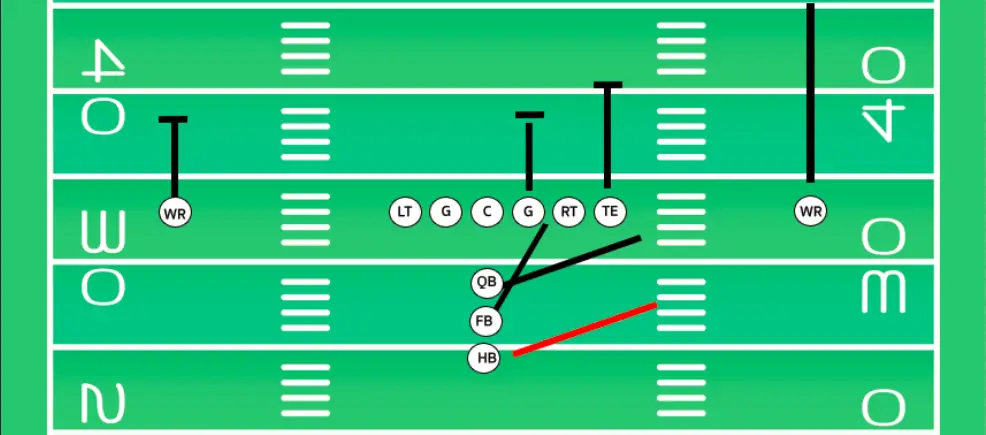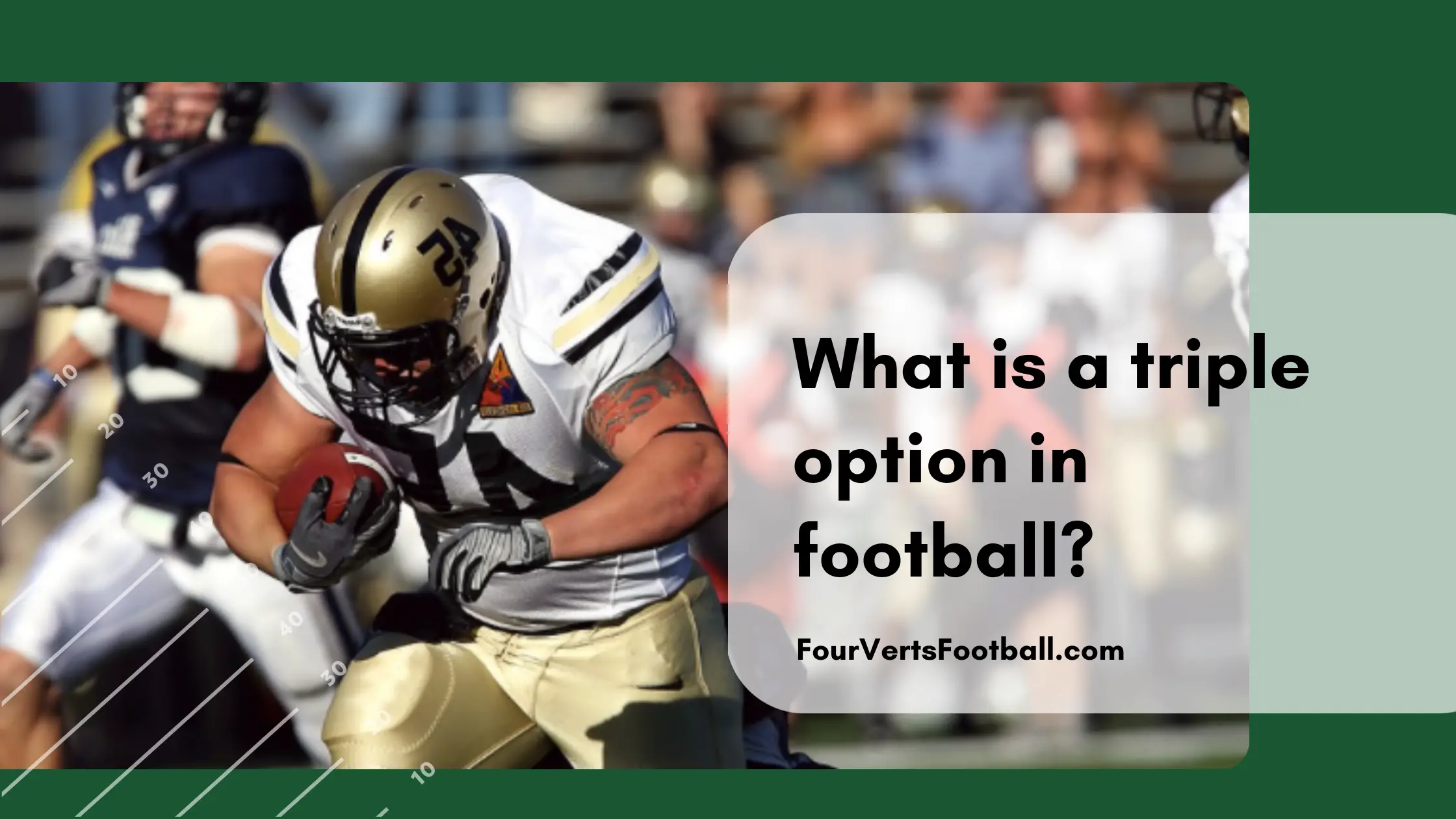A triple option in football is a play in which the offense will be able to choose one of three potential ball carriers to rush the ball based on what they see from the defense.
In the vast majority of triple-option plays the fullback, half back, or quarterback may end up rushing the ball.
On this play, the quarterback will have to make several reads to determine which offensive player is going to carry the ball. This is done by putting defenders in a position in which they have to choose to pursue one player or another.
If the defender chooses to focus on stopping the fullback for example the quarterback will simply go to the next option.
The reason this play is called the triple option is that there are three different options the quarterback can choose from when deciding who will carry the ball.
If you want to learn about other rushing plays like the triple option learn about dive rush plays or quarterback keeper rushes.
Anatomy Of A Triple Option
A triple-option play simply refers to a play in which three different players may run with the ball. But interestingly enough almost every triple-option play used in high-levels of football is more or less the same.
Below we will break down what a triple-option play looks like.
Option Number One

To start off the triple option play the ball will be snapped to the quarterback, usually, they take this snap under center but it can be run from the shotgun as well.
Once the quarterback snaps the ball the guard on the side the play is running to will chip block his defensive lineman and then move downfield. The guard will then block a linebacker downfield leaving his defensive lineman unblocked.
The quarterback will now start the motion of handing the ball off to the fullback. The fullback if given the ball will run up the middle of the field.
At this point, the quarterback is going to read the unblocked defensive lineman. If they pursue the fullback in the middle of the field the quarterback will stop the handoff and hold onto the ball.
If the defensive lineman looks to contain the outside then the ball will be handed off to the fullback.
Option Number 2

If the quarterback sees the fullback option is not viable he will hold onto the ball and start running towards the outside tackle.
As the quarterback reaches the end of the formation he will find he has another decision to make.
A linebacker or defensive back should be waiting for the running back and quarterback as they work their way across the formation.
The running back is going to run alongside the quarterback separated by about three yards. The running will be a few yards behind the quarterback so he is able to receive a lateral pass.
At this point, the quarterback will read this defender to determine whether or not he should pitch the ball.
If the quarterback sees that the defender is running to the outside to contain the running back then he is going to keep the ball and run with it downfield. In these situations, the quarterback will carry the ball just outside the offensive tackle.
If the offensive lineman that blocked downfield was able to take a defender the quarterback may have a chance at a large gain.
Option Number 3

If the quarterback reaches the end of the formation he must determine what the outside defender is going to do. If he finds that this defender is approaching him in an attempt to make a tackle he is going to pitch the ball laterally to the running back.
It is important that the quarterback does this at the last second possible so that the defender is committed to the tackle and is therefore out of the play.
Once the running back catches this lateral he will advance the ball down the sideline, oftentimes for a huge gain.
That is all on triple options our guide to draw plays or reverse rushes break down similar football plays.

